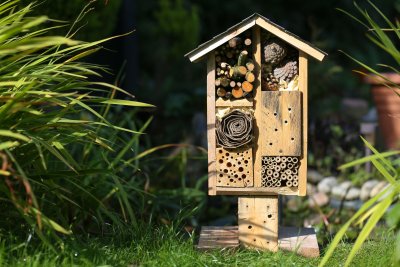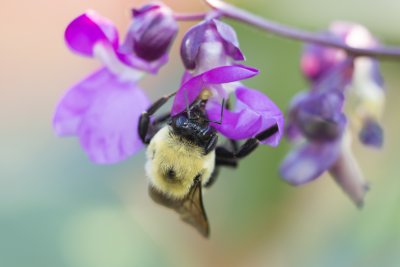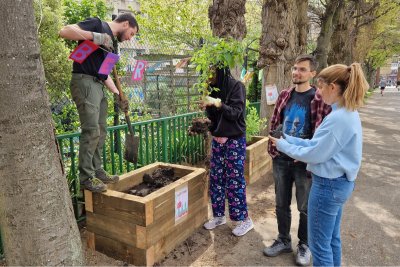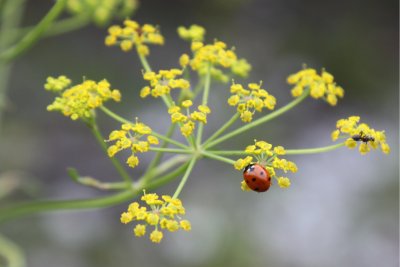Growing for nature resources
Explore our selection of resources to help you identify, record and create nore habitat for nature on your growing site

Food growing sites can be rich in biodiversity and provide vital habitat for nature in urban settings. We've put together a bunch of resources to help you get to know the creatures in your garden and do more to attract them.
Read on to find out how we can all support biodiversity and monitor wildlife.
Identifying and recording species in your garden

- Monitoring your pollinator patch | Buglife
- Insect groups identification guide | UK Pollinator Monitoring Scheme
- Nature Recording Hub | Natural History Museum
A collection of resources for monitoring and encouraging nature in your spaces as well as schemes for logging your records and sharing your data.
- Guide to Running a BioBlitz 2.0 | Natural History Museum
A detailed breakdown of what a bioblitz is, how to complete one and related activities you can run, including involving school groups.
- UK Pollinator and monitoring scheme
A UK survey collecting data on the total number of insects that visit a particular flower running from 1 April to 30 September.
- Survey Calendar for Beginners | The Urban Nature Project
A calendar outlining the different surveys for monitoring flora and fauna in the UK across the different seasons
- City Nature Challenge | iNaturalist
An international effort for people to find and document plants and wildlife in cities across the globe, happens yearly in the spring using the iNaturalist App that allows you to record and share your plant and wildlife observations, and share data.
- Big butterfly count | Butterfly Conservation
Record butterflies with the iRecord app for their annual survey.
- Nature Overheard Survey | Natural History Museum
A community science project investigating the impact of noise pollution on insects near roads by asking people record sounds and sights of nature in their local area.
- UK Species Identification guides | National History Museum
Training & courses

- An Introduction to Urban Ecology | Natural History Museum
A course aimed at beginners with an interest in ecology in cities, how it can differ to that of the countryside and how we can monitor and work to improve biodiversity in urban areas.
- X:Polli-Nation, Pollinator Citizen Science | Open University
Learn about identifying and planting for pollinators through interactive and engaging online and outdoor citizen science activities.
- For Peat's Sake | A peat-free growing online course on the impact of peat harvesting and finding quality alternatives.
- Wildlife Gardening Course | Avon Wildlife Trust
A training course recording focused on wildlife gardening
- Field identification of bees | Field Studies Council
Encouraging biodiversity in your space

- Seasonal Gardening Tasks for Wildlife | Buglife
A comprehensive video by a conservation officer outlining the seasonal tasks you can do in your garden to encourage wildlife.
- Make insect hotals with BuzzClub
- Get detailed guides on how to create bee, earwig and ladybird houses and hoverfly lagoons and take part in citizen science to help BuzzClub better understand how different types of housing affect nesting behaviours
- How to grow a wildlife friendly vegetable garden | Avon Wildlife Trust
A resource on companion planting, friendly pest control, organic repellents and how wildlife and growing vegetables can go hand in hand.
- Butterfly conservation tips
Butterfly & moth identification and conservation guides including resources on creating your own wild spaces for butterflies and moths.
- Wild about Gardens
A campaign and resource hub with tips on managing your garden to benefit wildlife, including specific resources on beetles, hedgehogs, ponds, bats, worms and more.
- Wildlife Gardening | Garden Organic
A set of guides including ways to plant and create habitats for wildlife, including building ponds and hanging habitats, see also their guide on organic pest control
- Autumn and Winter Garden Maintenance | Bumblebee Conservation Trust
Tips on seasonal tasks to support bumblebees.
- Wildlife friendly gardening | Natural History Consortium
Tips, Stories and case studies from growers in England taking action for nature and introducing more wildlife-friendly methods into their gardening and growing.
- Nature on your doorstop hub | RSPB
A collection of activities, guides and resources on helping local wildlife.
- B-Lines | Buglife
Resources on how to plant wildflower rich habitat to create insect superhighways.
- How to Make a Container Pond |The Royal Parks
Watch this instructional video demonstrating how to create a container pond to support invertibrates, no matter how small your space.
- Growing Toolkit | Propogate
With guidance and activities like potting on and making a DIY wormery
Support our work
Your donation will help communities grow more food in gardens across London.
Capital Growth is a project of Sustain: the alliance for better food and farming.




